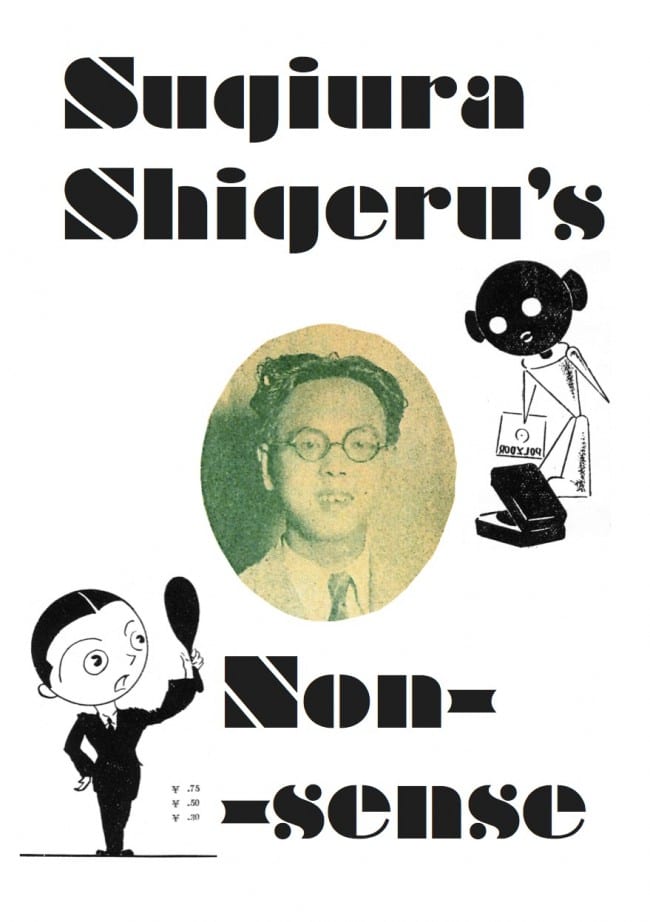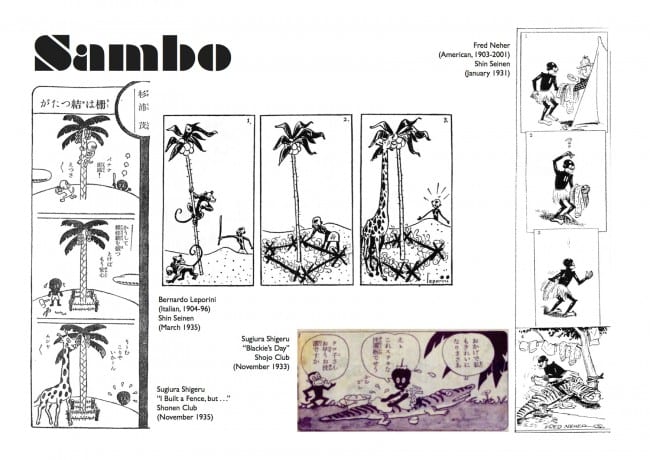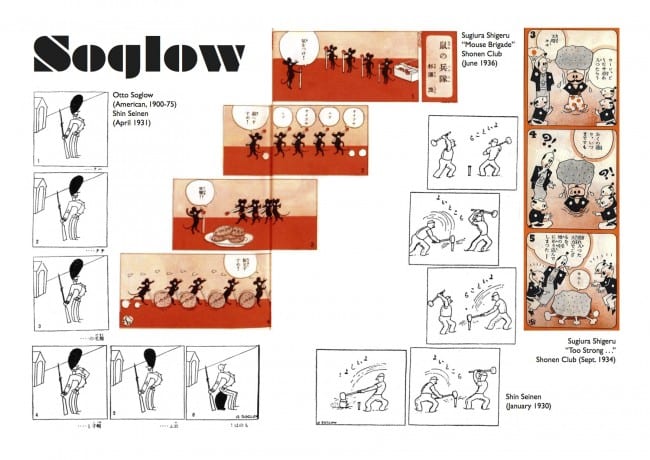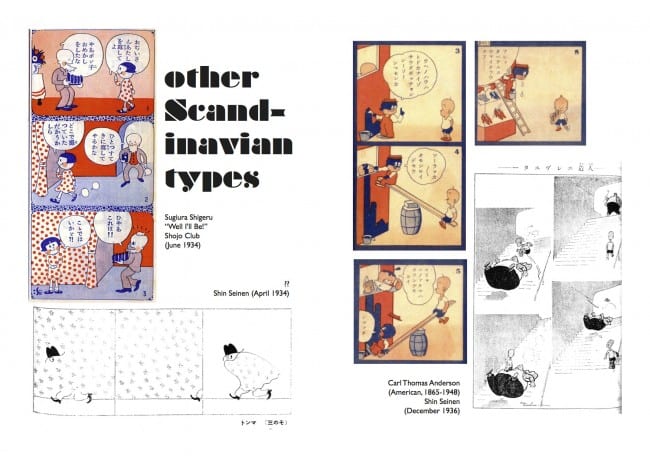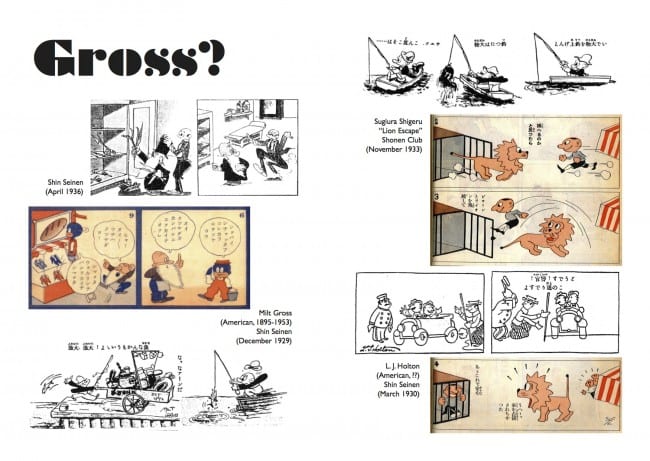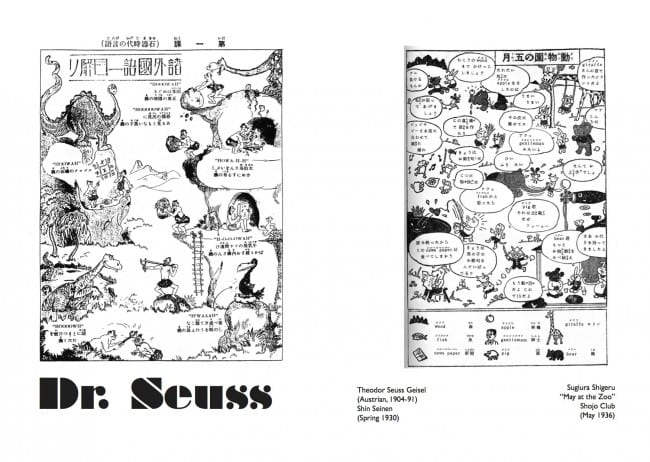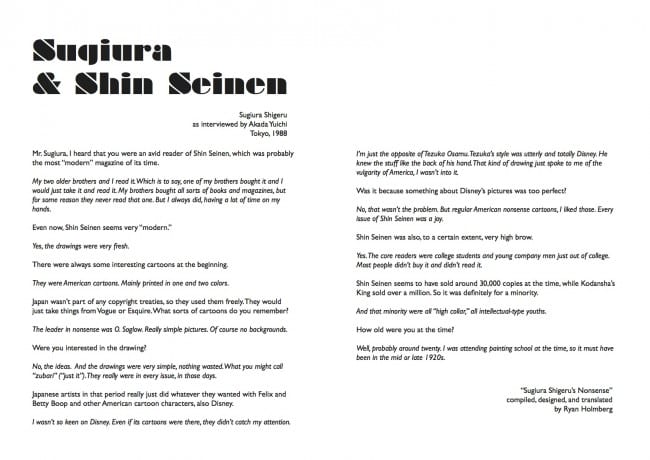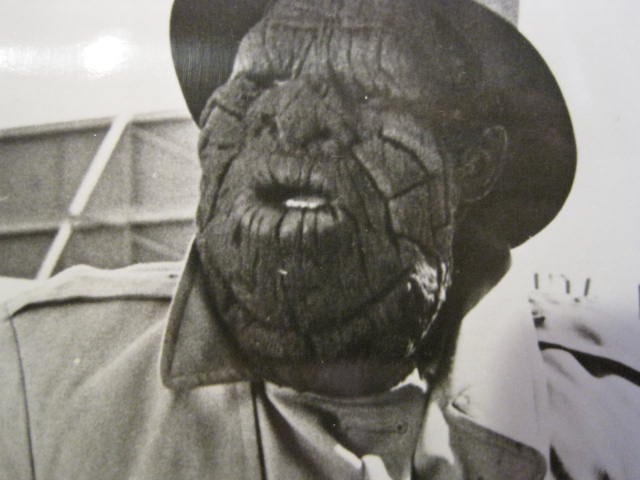Even in Japan, there is as much confusion as curiosity regarding the roots of Sugiura Shigeru’s art and sense of humor. It has been called many things – nonsensical, surrealistic, psychedelic, avant-garde – but these are mainly just descriptions casting around for real ground.

The graduate students at the Tokyo university I am now affiliated with (Gakushuin University) are putting together a zine on the topic of Sugiura. I asked to be part of it. After reading through Sugiura’s interviews, it seemed to me the wise place to start was at the beginning, with Shin Seinen – New Youth – the famous monthly men’s magazine that the artist avidly read as a young man in the late 1920s and 30s.
Shin Seinen is typically remembered as the home to Edogawa Ranpo, Yokomizo Seishi, and Unno Jūzō’s early stories, and the main vehicle for translated mystery fiction from primarily the English-speaking world. However, it was also a major arbiter of modern and especially American fashion and entertainment, with large sections dedicated to men’s clothing, sports, and especially Hollywood.
It was also one of the leading introducers of American and European cartoons of the New Yorker, Life, and Vanity Fair variety. It proffered an urbane and decidedly middle-class sense of humor, this despite the magazine’s usual association with the lugubrious world of crime film and fiction.
Sugiura read voraciously and widely in his youth. Considering his many ninja spoofs, a Japanese reader probably thinks first of the Tachikawa Kōdan – the oral stories transcribed and published as cheap popular fiction in the Meiji and Taishō periods. One assumes so just from the manga, but Sugiura is also on record for saying that he read these kōdan in his youth. But he was an equally big fan of Shin Seinen’s cartoons, as he was of American silent comedies, especially those of Roscoe Arbuckle and Ben Turpin.

The history of comedy is a notoriously nebulous and difficult subject. Especially when the laughs are half in a foreign tradition. At any rate, it’s more than I can handle competently just now. So what I put together instead was a “visual essay” on Sugiura and Shin Seinen’s cartoons. What follows on the next pages is the result of combing the magazine from 1929 to 1937, at which point it turned strongly pro-war and increasingly anti-Western. This period overlaps with Sugiura’s debut (1932) and early work for Kōdansha’s major youth periodicals (particularly Shōnen Club, Shōjo Club, and the Picture Book series beginning in 1937) as well as his occasional work for Shin Seinen’s junior edition, Shin Shōnen, as well as Shōnen Shōjo Tankai, published by the same Hakubunkan. Some of the comparisons I make are specific, with exact cases of swiping. Others are more general. You can tell me if you find them convincing or not.
You might want to read the last page first. There I have translated sections of an interview with Sugiura from 1988 in which he professes his love for Shin Seinen.
This is a rough draft, design-wise and information-wise. Since Shin Seinen printed these cartoons without attribution, there are a couple artists I have been unable to identify. If you can, please help. As I will be putting words to these visual connections for an essay sometime in the future, any general comments would also be good: like where these sorts of cartoons might have first appeared, and thus what magazines Shin Seinen was splicing together, or what kind of humorist you think Sugiura was in these early years. Keep in mind that he is adapting adult cartoons for kids.
The zine in which this montage will appear will be published in July. Which is to say, any useful comments can be incorporated. Which is also to say, if you read Japanese and want a copy (there will be other pieces on Sugiura in it), it will be for sale at the big Comiket in Tokyo in late July and then at various specialty bookstores in Tokyo. Look for the title Sankaku Boshi, “Triangular Star,” named apparently after a later Sugiura character.
For detail, click on the spreads and then again on the "Full size" pixel-size.
That's Sugiura in 1933 on the next page. Flanking him are characters from two Shin Seinen ads, the left for hair pomade, the right for Polydor gramophones. They were not drawn by Sugiura.


